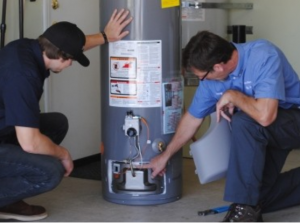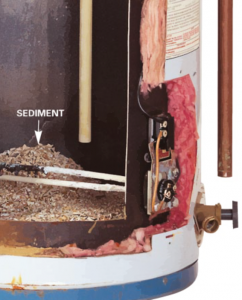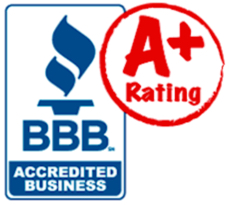 Your home’s water heater is an essential appliance, working tirelessly behind the scenes to provide you with hot water whenever you need it. But just like any other appliance, it requires periodic maintenance to ensure it operates efficiently and has a long lifespan. One crucial maintenance task is flushing your water heater. In this guide, we’ll delve into the core reasons for flushing your water heater and provide a step-by-step procedure to do it effectively.
Your home’s water heater is an essential appliance, working tirelessly behind the scenes to provide you with hot water whenever you need it. But just like any other appliance, it requires periodic maintenance to ensure it operates efficiently and has a long lifespan. One crucial maintenance task is flushing your water heater. In this guide, we’ll delve into the core reasons for flushing your water heater and provide a step-by-step procedure to do it effectively.
Why Flushing Your Water Heater is Essential
Improved Energy Efficiency
Over time, sediment builds up at the base of the water heater tank. This sediment acts as a barrier, forcing the heating element to work harder to heat the water above it. By flushing your water heater, you remove this barrier, allowing the unit to heat water more efficiently, consuming less energy in the process.
Extend the Lifespan of Your Water Heater
 The accumulated sediment can corrode the inner lining of the tank, leading to premature wear and potential leaks. Flushing the tank reduces the risk of corrosion, thereby extending the lifespan of your appliance.
The accumulated sediment can corrode the inner lining of the tank, leading to premature wear and potential leaks. Flushing the tank reduces the risk of corrosion, thereby extending the lifespan of your appliance.
Enhanced Water Quality
The sediment in the tank can mix with the water, resulting in cloudy, discolored, or foul-smelling water. By regularly flushing your water heater, you can maintain the clarity and quality of your water supply.
Prevention of Overheating
The sediment buildup can insulate the heating element, causing it to overheat, which can be a potential safety risk. Flushing ensures the heating element operates within safe temperature ranges.
Step-by-Step Guide to Flushing Your Water Heater
1. Turn Off the Power
Turn Off the Power
For electric water heaters: Switch off the circuit breaker.
For gas water heaters: Turn the gas switch to “off”
2. Connect a Garden Hose
3. Open the Drain Valve
 Open the drain valve, allowing the water to flow out.
Open the drain valve, allowing the water to flow out.6. Refill the Tank
Turn off the hot water tap. Turn on the water supply to refill the tank.
7. Restore the Power
For electric water heaters: Switch on the circuit breaker.
For gas water heaters: Relight the pilot light (if necessary) and turn the gas switch to “on.”
Regularly flushing your water heater is an essential maintenance task that ensures optimal efficiency, extends the appliance’s lifespan, and guarantees the quality of your water supply. With our comprehensive guide, you now have the necessary knowledge to carry out this procedure effectively and safely. Remember to make this a routine, and your water heater will serve you efficiently for years to come.
The Value of Hiring a Professional Plumber: Cass Plumbing

 While our guide provides a comprehensive overview of flushing your water heater, the procedure can be intricate and, at times, risky for those unfamiliar with plumbing systems. This is where the expertise of a professional plumber becomes invaluable. Engaging a seasoned plumber ensures that the flushing process is conducted thoroughly, safely, and without potential harm to your appliance. We recommend entrusting this task to Cass Plumbing. As a renowned Tampa plumbing contractor, Cass Plumbing has been safeguarding and enhancing the plumbing systems of homes and businesses in Tampa for over 20 years. Their commitment to excellence is reflected in their A+ rating with the Better Business Bureau. Furthermore, their reputation for high-quality service has led them to be recognized as the recommended plumber for Tampa by Best Plumbers. When it comes to the health of your water heater and the safety of your home, choosing Cass Plumbing is a decision anchored in trust and professionalism.
While our guide provides a comprehensive overview of flushing your water heater, the procedure can be intricate and, at times, risky for those unfamiliar with plumbing systems. This is where the expertise of a professional plumber becomes invaluable. Engaging a seasoned plumber ensures that the flushing process is conducted thoroughly, safely, and without potential harm to your appliance. We recommend entrusting this task to Cass Plumbing. As a renowned Tampa plumbing contractor, Cass Plumbing has been safeguarding and enhancing the plumbing systems of homes and businesses in Tampa for over 20 years. Their commitment to excellence is reflected in their A+ rating with the Better Business Bureau. Furthermore, their reputation for high-quality service has led them to be recognized as the recommended plumber for Tampa by Best Plumbers. When it comes to the health of your water heater and the safety of your home, choosing Cass Plumbing is a decision anchored in trust and professionalism.






